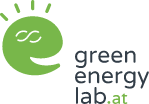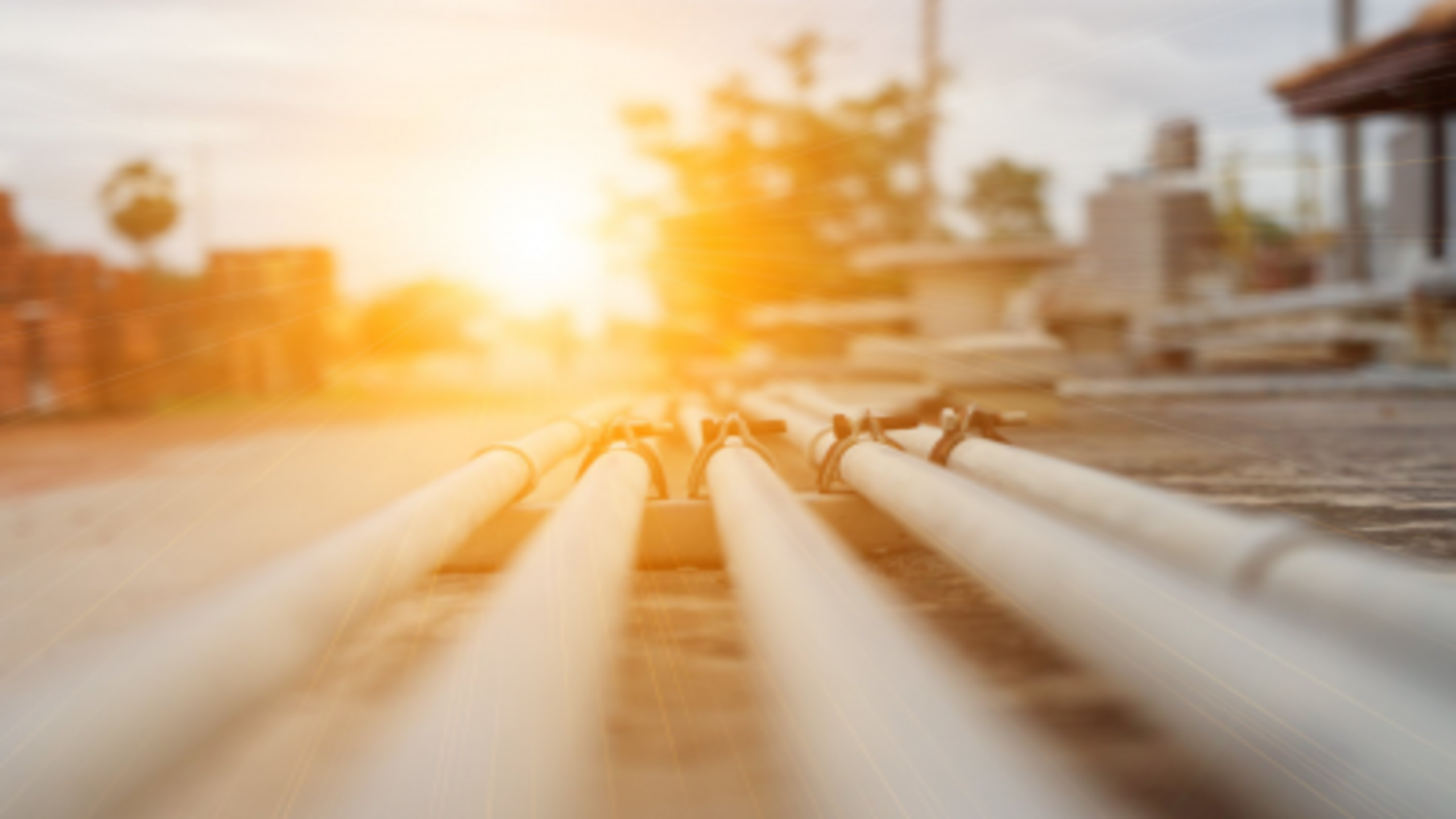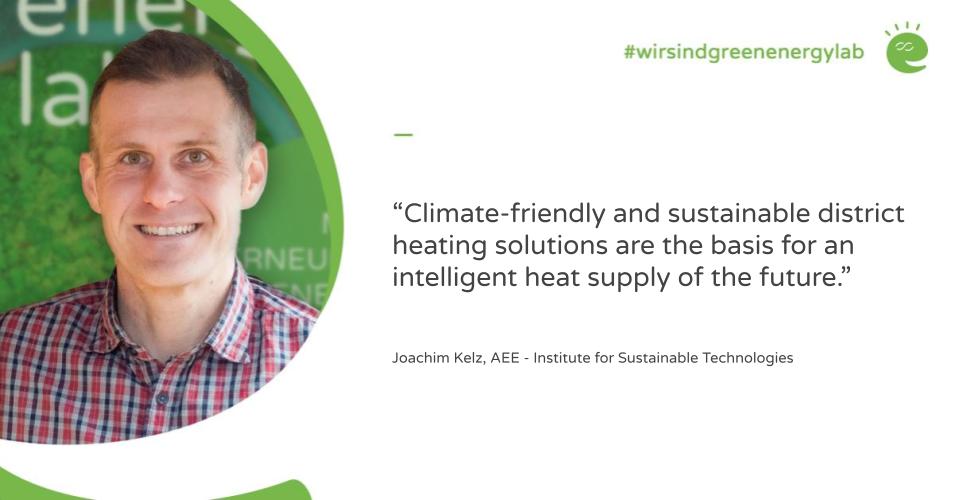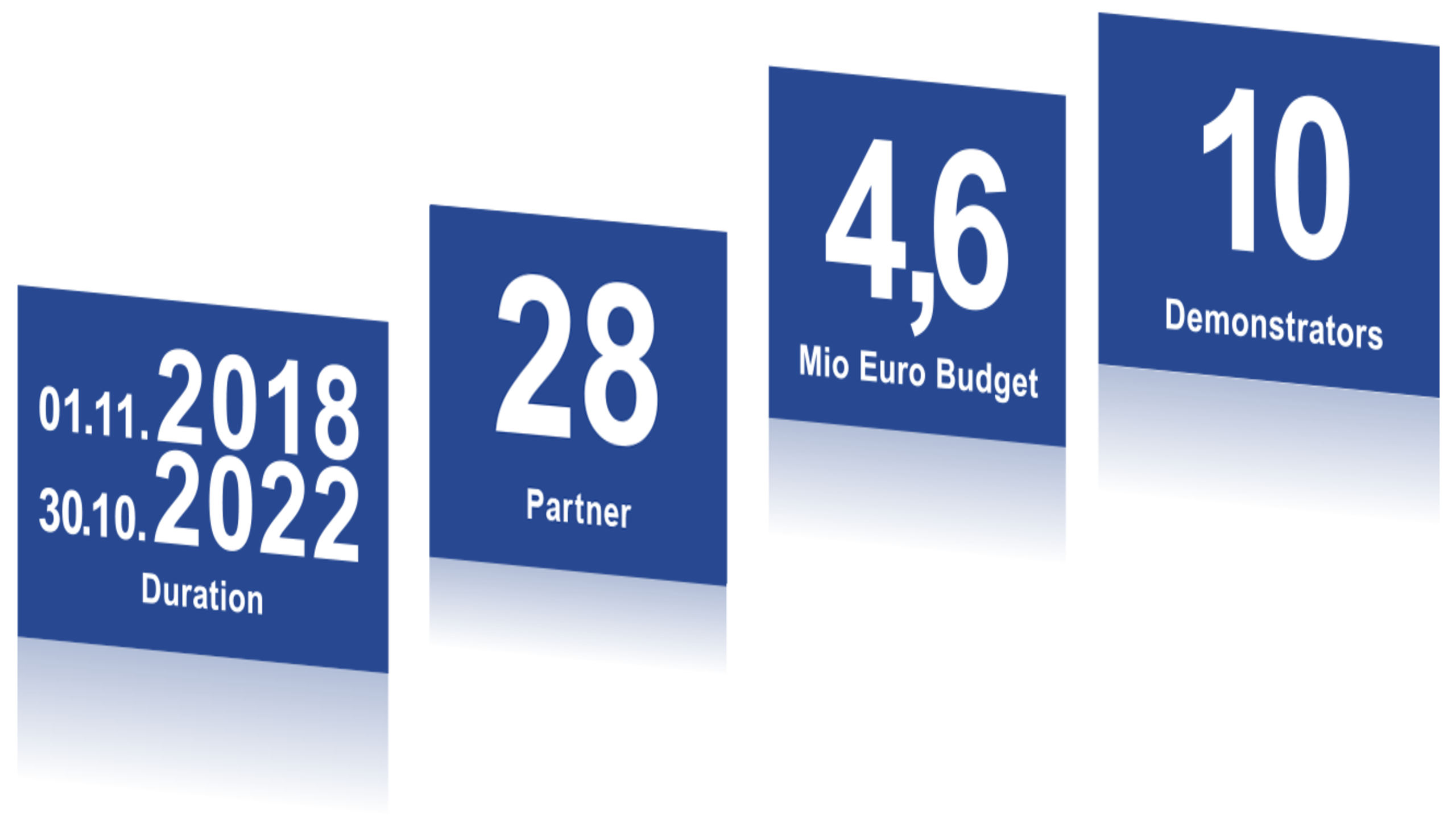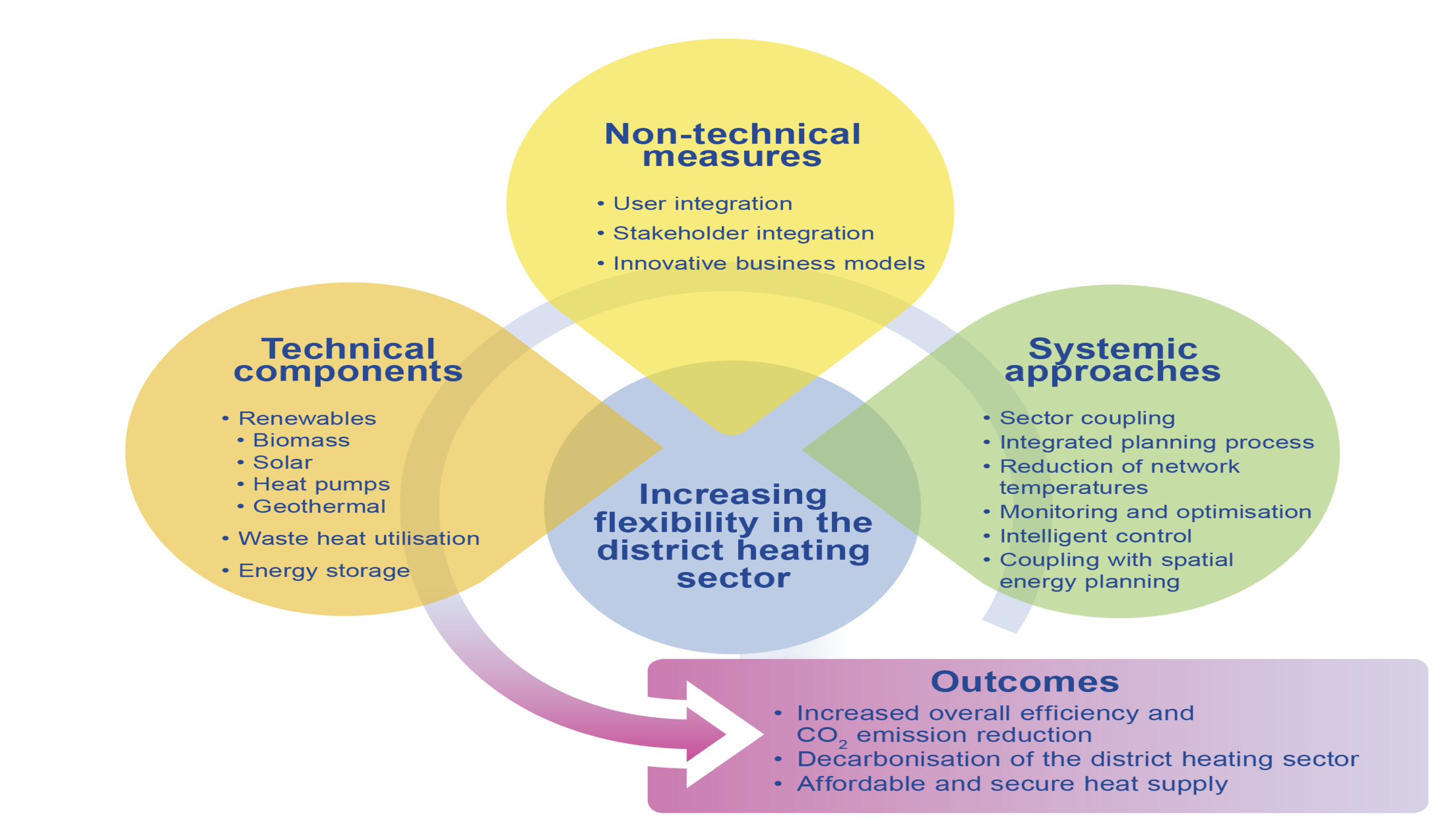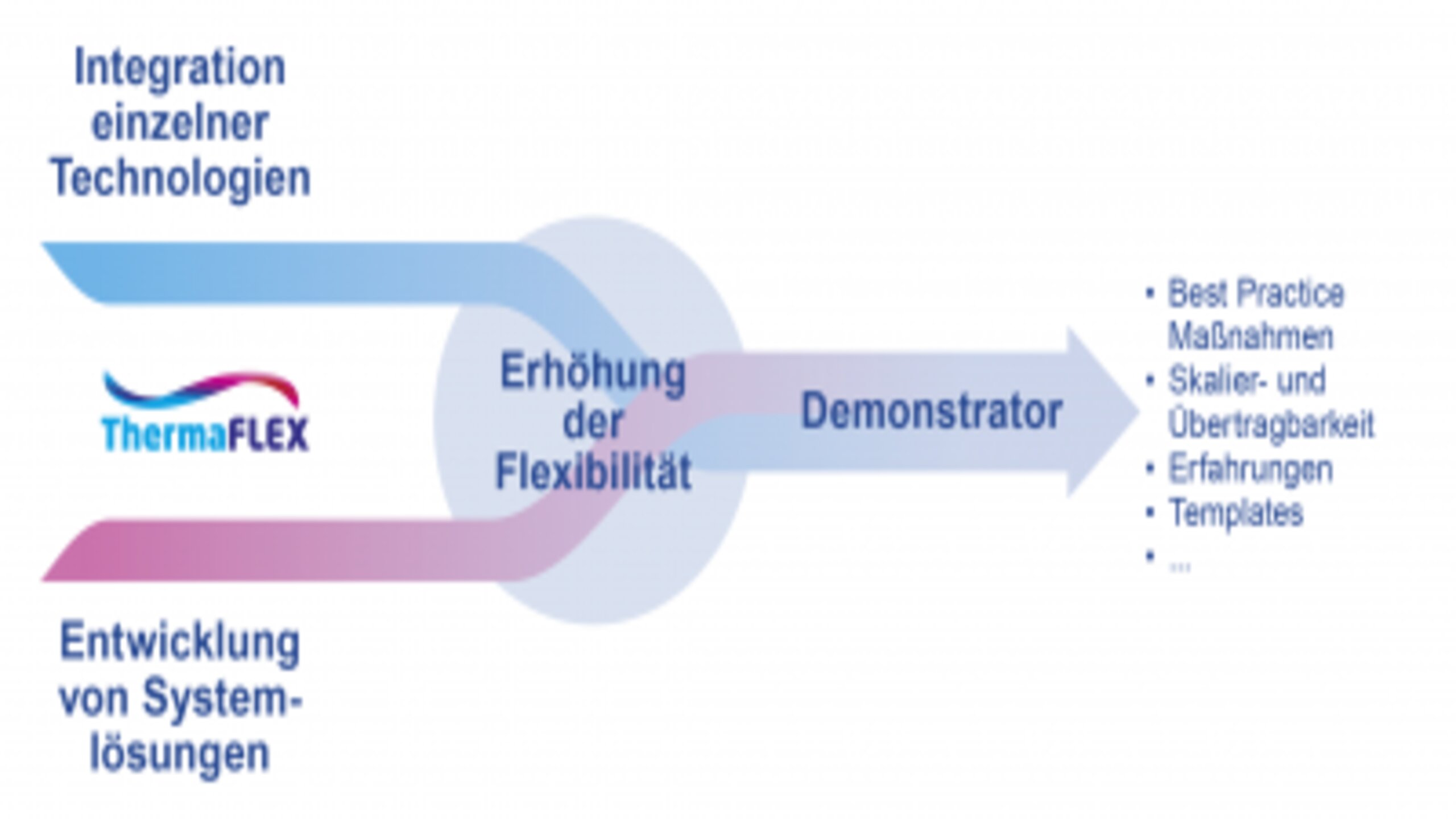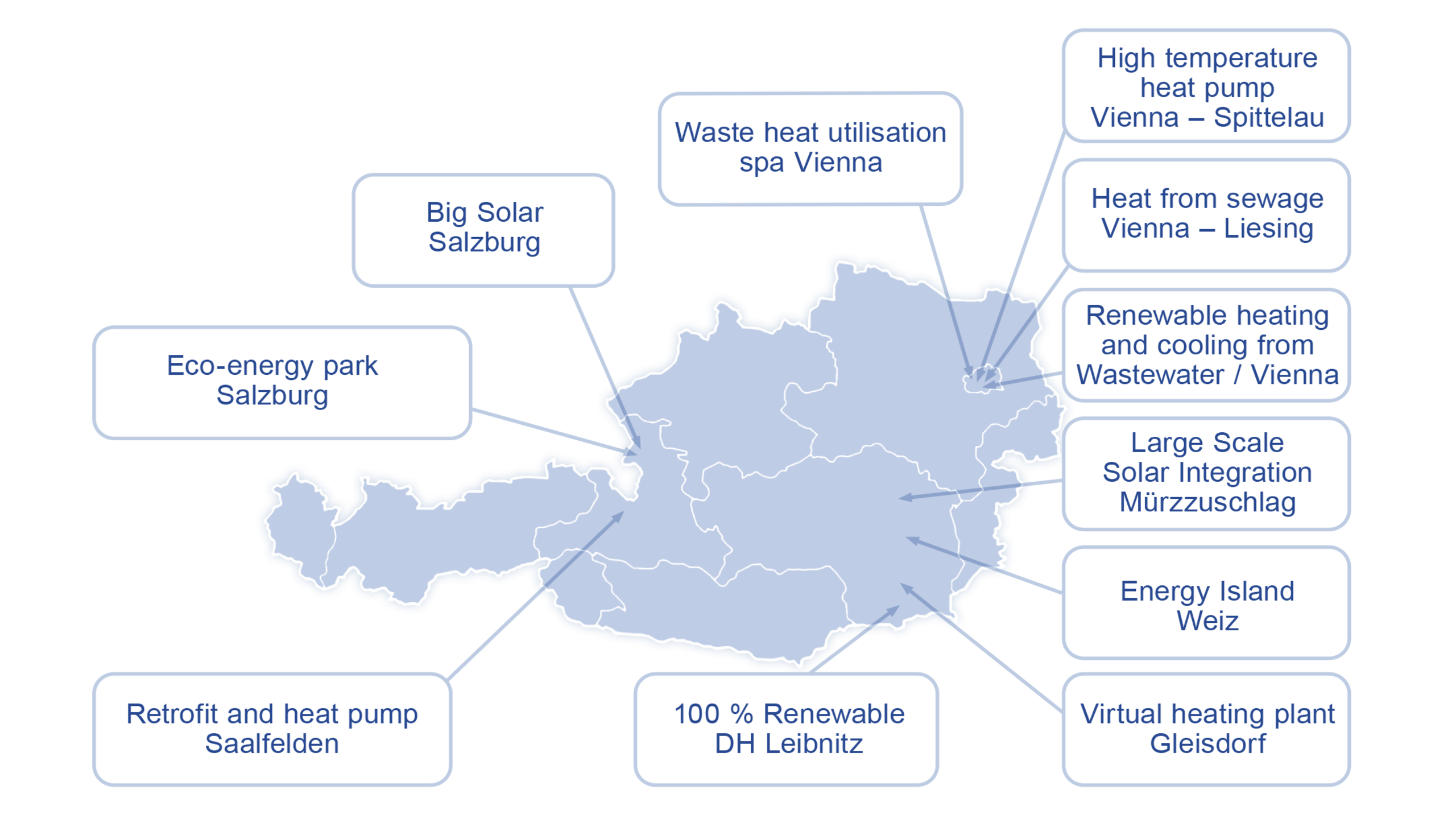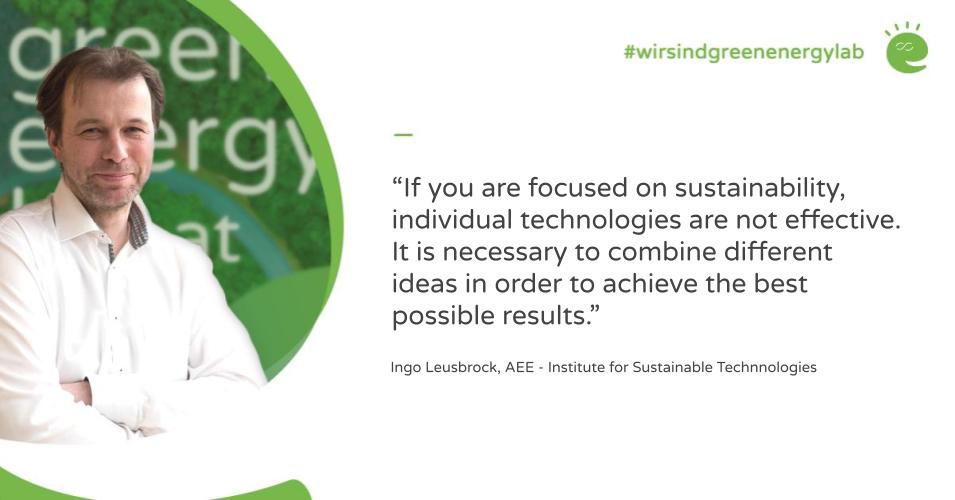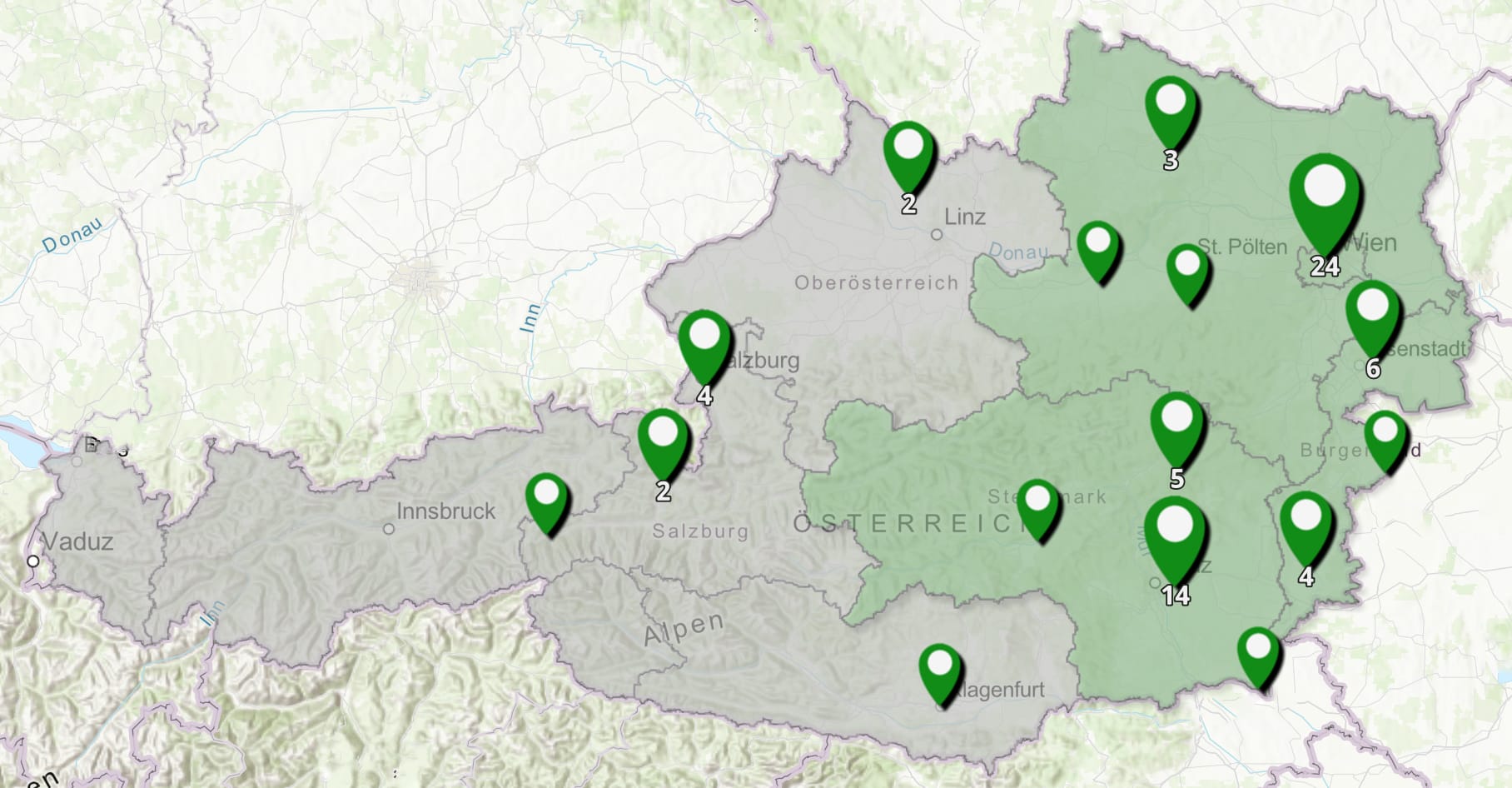ThermaFLEX
The lead project for developing the district heating network of tomorrow
This large-scale research project has been completed. Download the ThermaFLEX Publishable Final Report here.
In 2016, Austria’s space heating demand amounted to approx. 87 TWh/a (total energy demand: 311 TWh/a). A quarter of this was provided via grid-connected heat supply through more than 2,000 district heating systems.
This means that the local and district heating sector already plays a central role in Austria’s energy supply. Around 5,400 kilometers of valuable heating pipe infrastructure have been laid in Austria. They pass sewage treatment plants as well as industrial and commercial operations whose residual and waste heat could be used in many ways, and on their way there are open spaces where solar heating systems and heat storage tanks could be installed. The already installed infrastructure, the existing expansion potential, especially in dense urban areas, the use of new concepts, technologies and renewable energy sources, the use of opportunities for sector coupling and the resulting contributions to the decarbonization of our energy system will make the sector even more important in the future.
Every fourth house in Austria is already supplied via heating networks – the aim of the ThermaFLEX flagship project was to make them more flexible. Consistently integrating renewable energies and waste heat into the heating networks of the future would not only improve the air in cities, but also avoid a considerable amount of CO₂ emissions, increase security of supply and protect consumers from rising oil and gas prices in the long term.
Objective of the ThermaFLEX project
The aim of the project was to develop strategies for making heating networks more flexible and to develop alternative energy sources for the heating networks in order to increase the proportion of renewable heat.
Approach and methodology of the ThermaFLEX project
In a sustainable and fully decarbonized energy system, for example, large shares of renewable, sometimes volatile energy sources, integrated sector coupling, decentralized energy conversion structures, etc. have led to a significant increase in system complexity. Gleichzeitig mussten aber einerseits die Versorgungssicherheit gewahrt bleiben sowie andererseits die Energiekosten für die Endkunden erschwinglich bleiben. This could only be achieved by increasing the flexibility of the overall system, which allows intelligent interaction between technical and non-technical elements.
District heating systems are ideally suited for measures to increase flexibility in terms of sector coupling, the integration of renewable energy sources, waste heat utilization, the use of heat storage, new operating strategies and user integration. This potential for flexibility can be further increased if holistic approaches are pursued and new scientific methods for simulation and optimization are used in planning, implementation and operation.
Demonstrators of the project ThermaFELX
The focus was on exemplary demonstrators in district heating supply areas in small, medium-sized and large cities, all of which were scientifically supported as part of the ThermaFLEX lead project and most of which have also been implemented in practice (further details on the individual demonstrators are available on the linked detail pages).
- Eco-energy park/absorption heat pump – Salzburg
- Waste heat recovery from thermal water – Therme Wien
- High-temperature heat pump Vienna Spittelau
- Heating and cooling with wastewater – Vienna Blumental
- Integration of a large-scale solar system – Mürzzuschlag
- Decarbonization of district heating – Leibnitz
- Modernization and integration of a heat pump – Saalfelden
- Virtual heating plant – Gleisdorf
Check out the presentation “Increasing Flexibility in DH Systems”, which was presented at ISEC 2024!
The following model solutions were being developed in the ThermaFLEX project:
HIGH TEMPERATURE HEAT PUMP IN WASTE INCINERATOR
LOW-CARBON DISTRICT HEATING NETWORK
VIRTUAL HEATING PLANT
INNOVATIVE WASTE HEAT UTILIZATION IN DISTRICT HEATING SYSTEMS
MODERNIZATION OF DISTRICT HEATING NETWORKS
INTEGRATION OF LARGE SOLAR THERMAL SYSTEMS INTO DISTRICT HEATING SYSTEMS
Media reports on the project
ThermaFLEX research project wins the Energy Globe Austria
The ThermaFLEX flagship project of the "Vorzeigeregion Energie - Green Energy Lab" was awarded the Energy Globe Austria sustainability prize in the "Fire" category on June 13, 2023.
To the articleThermaFLEX – The sustainable district heating network of tomorrow
Green Energy Lab and AEE INTEC presented the results of the flagship project funded by the Climate and Energy Fund as part of the „Flagship Region Energy“ programme.
To the articleWastewater as a future renewable energy source for the decarbonization of the energy and heat supply – APA-Science
The need to move away from fossil fuels is currently being made clear to us not only by climate change, but also by geopolitical and energy policy developments. The rapid and complete decarbonization of the heating sector and the move towards 100% renewables represent a major challenge.
To the articleThermaFLEX – The flagship project for developing the district heating network of tomorrow
It is necessary to combine different ideas in order to get the best out of innovation projects. If you are interested in sustainability, individual technologies are not effective.
To the article